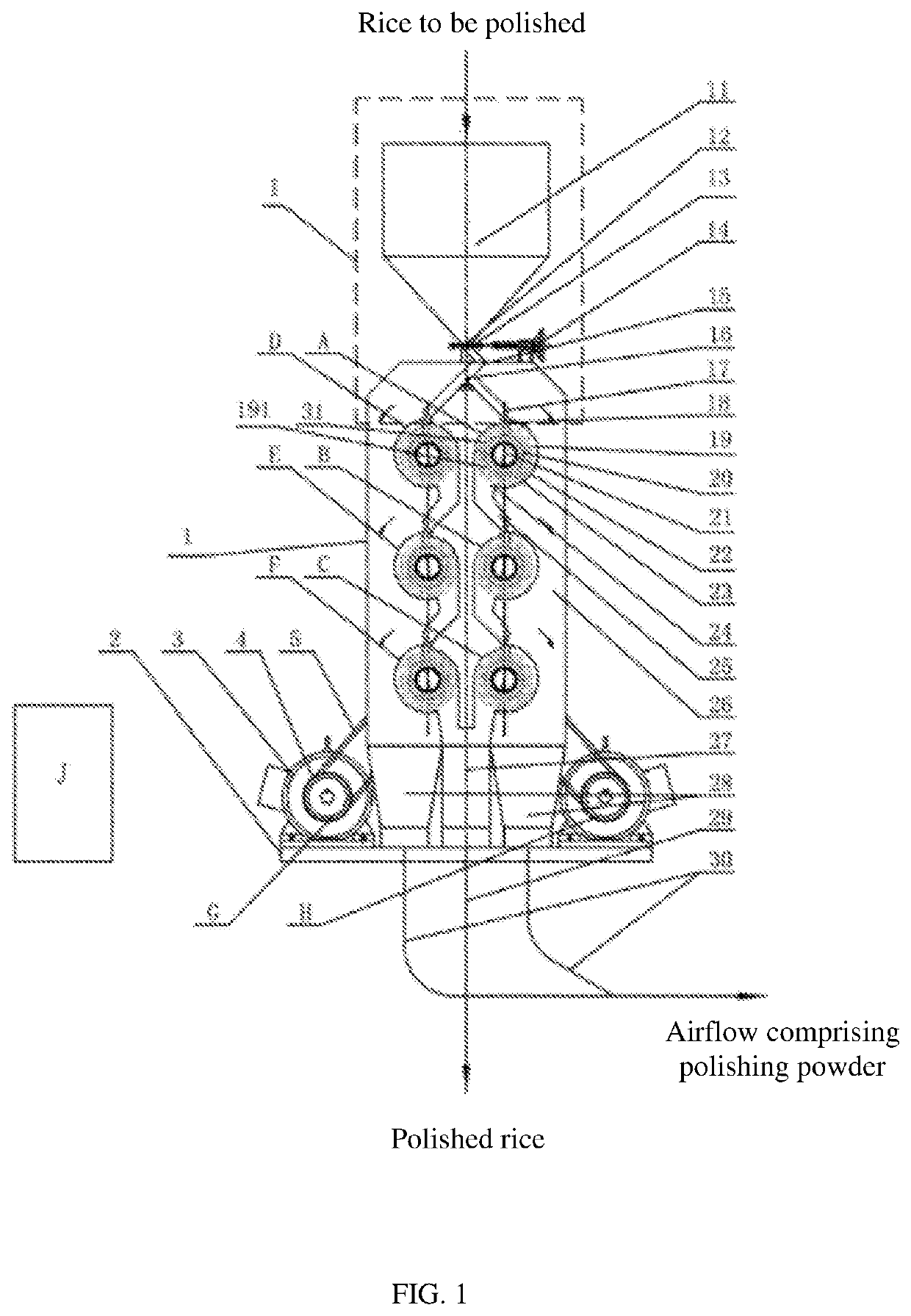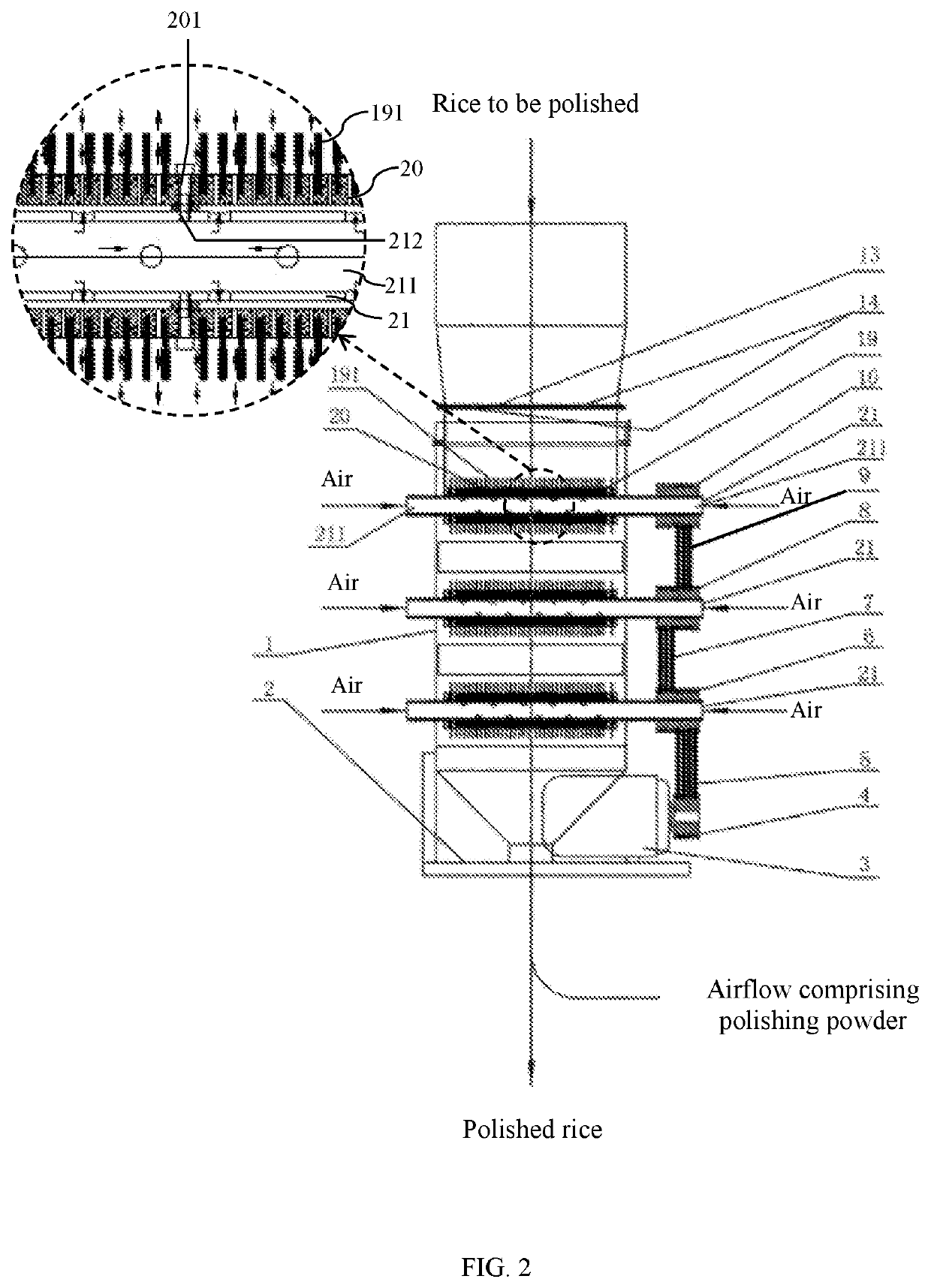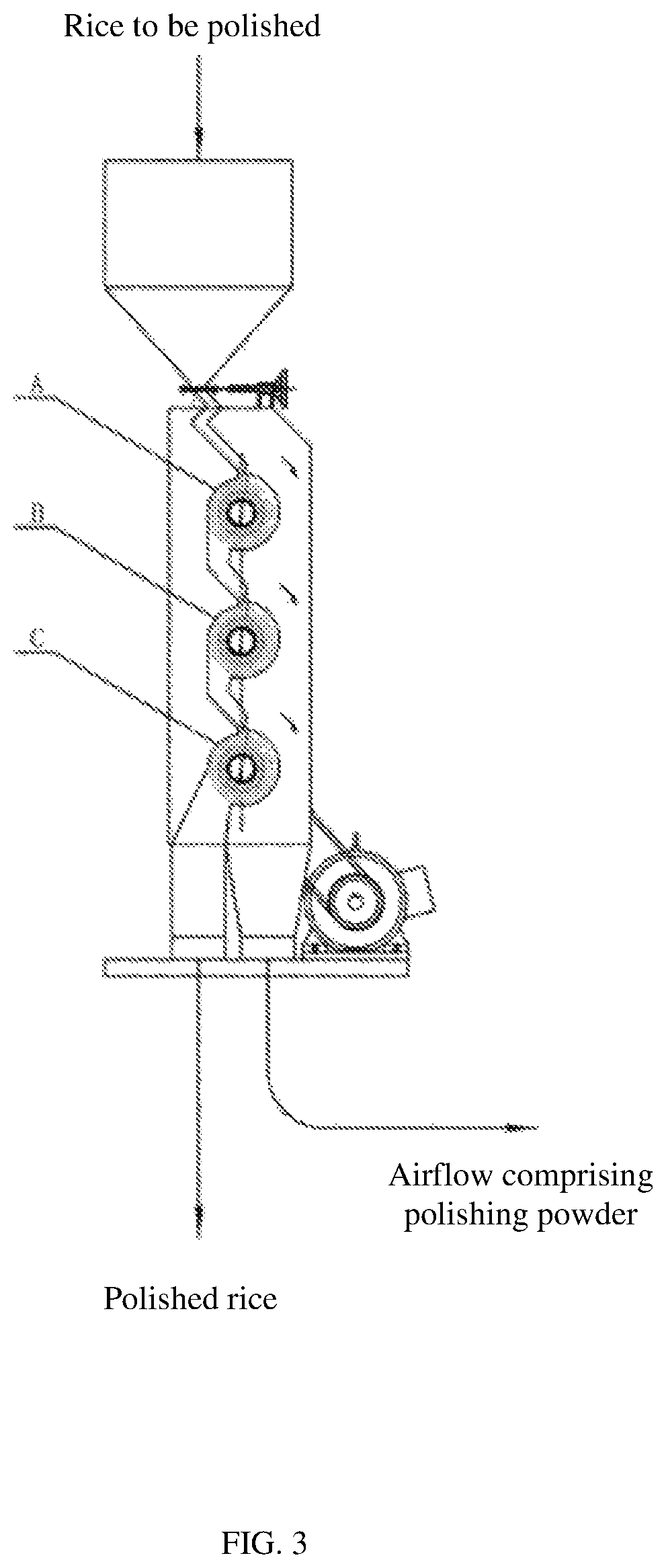Flexible polishing apparatus for granulated grains
a flexible, grain technology, applied in grain degerming, grain polishing, agriculture, etc., can solve the problems of unpolished rice, limited sales volume, and unpopularity of high-polished rice, and achieve low energy consumption, high yield, and no skin injury
- Summary
- Abstract
- Description
- Claims
- Application Information
AI Technical Summary
Benefits of technology
Problems solved by technology
Method used
Image
Examples
Embodiment Construction
[0034]The present invention will now be described in further detail with reference to the drawings and embodiments in order to make the technical problem, technical scheme and beneficial effect of the present invention more clear. It should be understood that the specific embodiments described herein are only for the purpose of explaining the present invention and are not intended to be the limit of the present invention.
[0035]As shown in FIG. 1 and FIG. 2, a flexible polishing apparatus 100 for granulated grains according to an embodiment of the present invention comprises a housing 1, a feeding device I, a transmission device, at least one flexible polishing unit, a bran discharging device, and a rice outlet 27, wherein the flexible polishing unit comprises a radial gravity self-flow flexible polishing chamber 31 (hereinafter referred to as flexible polishing chamber); the feeding device I, the flexible polishing chamber and the rice outlet 27 are sequentially arranged from top to...
PUM
| Property | Measurement | Unit |
|---|---|---|
| flexible | aaaaa | aaaaa |
| gravity | aaaaa | aaaaa |
| color | aaaaa | aaaaa |
Abstract
Description
Claims
Application Information
 Login to View More
Login to View More - Generate Ideas
- Intellectual Property
- Life Sciences
- Materials
- Tech Scout
- Unparalleled Data Quality
- Higher Quality Content
- 60% Fewer Hallucinations
Browse by: Latest US Patents, China's latest patents, Technical Efficacy Thesaurus, Application Domain, Technology Topic, Popular Technical Reports.
© 2025 PatSnap. All rights reserved.Legal|Privacy policy|Modern Slavery Act Transparency Statement|Sitemap|About US| Contact US: help@patsnap.com



